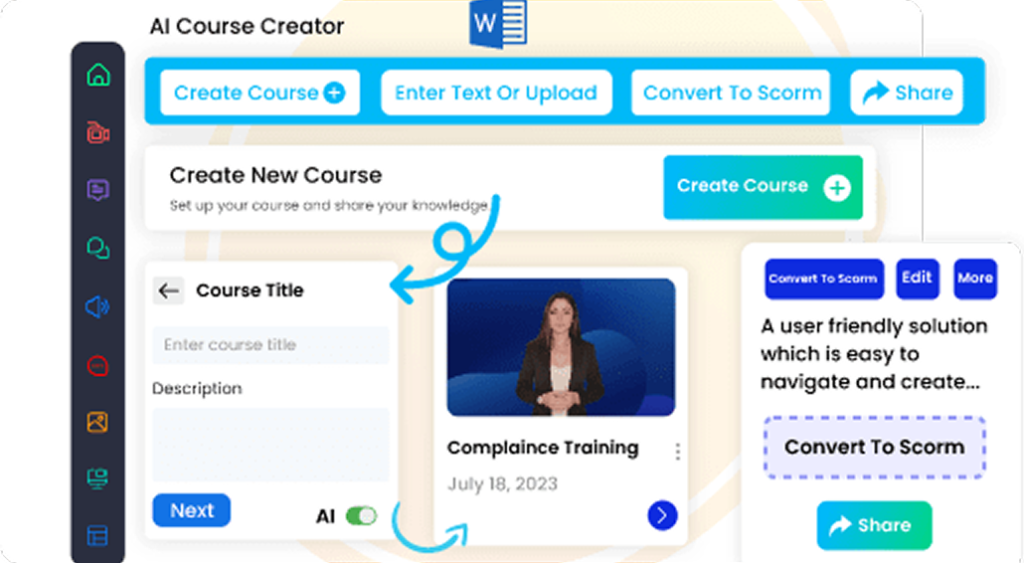Benefits of Active Listening
Active listening is more than just hearing words; it’s about fully understanding, accurately responding, and remembering the content of a conversation. It involves being present in the moment and processing what is being said both verbally and nonverbally. Training employees in active listening can foster stronger relationships, minimize misunderstandings, and increase efficiency in the workplace.
- Improved Relationships: Active listening promotes empathy and understanding, strengthening professional relationships. It helps create a work culture based on trust and mutual respect, which is essential for long-term collaboration and team unity.
- Enhanced Problem-Solving: Employees can address issues more effectively when they actively listen to one another. Listening attentively allows individuals to identify root causes and collaborate on finding effective solutions.
- Boosted Productivity: Miscommunications and misunderstandings are reduced, saving time and effort. Fewer errors and clearer instructions lead to better task execution and project completion.
- Increased Engagement: Active listeners are more engaged, ensuring that conversations are focused and productive. When employees feel heard, they’re more likely to contribute their ideas and insights, driving innovation and commitment.
These benefits ultimately contribute to a more positive and productive workplace environment, where employees feel heard, valued, and understood. This leads to greater job satisfaction and lower turnover rates, which are crucial factors in maintaining a high-performing team. When a company prioritizes communication through active listening, it also enhances its reputation as an employer that cares about employee well-being and teamwork.
Key Skills for Active Listening
To effectively train active listening, employees need to master several critical skills. These competencies contribute to the overall effectiveness of the communication process and should be emphasized in any active listening training program for employees.
1. Full Attention
Active listening requires full attention. It’s crucial to avoid distractions and focus entirely on the speaker. This means eliminating interruptions like smartphones or laptops during conversations. Employees should make a conscious effort to maintain mental focus and be present throughout discussions, which increases the likelihood of understanding the message correctly.
2. Reflective Listening
Reflective listening involves paraphrasing or summarizing what the speaker has said to ensure understanding. This demonstrates that the listener values the speaker’s message and is invested in achieving clarity. It also provides an opportunity for the speaker to confirm or correct the interpretation, leading to more accurate and productive exchanges.
3. Non-Verbal Cues
Non-verbal communication, such as maintaining eye contact, nodding, and using appropriate facial expressions, plays a significant role in active listening. These cues show the speaker that the listener is engaged and emotionally present. Training employees to be mindful of their body language during conversations supports better interpersonal connections and reduces the risk of miscommunication.
4. Asking Open-Ended Questions
Open-ended questions allow for deeper discussions and demonstrate a genuine interest in the conversation. These questions encourage detailed responses and help clarify complex topics. Instead of yes/no answers, open-ended inquiries spark meaningful dialogue and show respect for the speaker’s perspective.
5. Empathy
Empathy is a cornerstone of active listening. Understanding the emotions behind the speaker’s words fosters a sense of connection and trust. Active listeners who practice empathy make the speaker feel heard, respected, and valued. This emotional intelligence improves collaboration and diffuses potential conflicts before they escalate.
By focusing on these key active listening skills, employees will be better equipped to engage in conversations that lead to more productive outcomes. This will result in improved performance both at the individual and team levels, contributing to overall organizational success.
Learning Built Around Your Goals.
Discover how our courses can align with your training goals and drive real results.
How to Train Active Listening
Active listening training for employees can be a transformative experience. It involves a combination of theoretical knowledge and practical exercises to improve listening skills. Here’s how you can train active listening in your organization:
1. Introduce Active Listening Concepts
Start by explaining what active listening is, its importance, and the benefits it offers. Use examples to demonstrate how it improves communication, decision-making, and conflict resolution. Consider using videos, infographics, or case studies to provide real-world examples of active listening in action and to cater to different learning styles.
2. Role-Playing Exercises
Engage employees in role-playing scenarios where they practice listening actively and responding effectively. Provide them with workplace scenarios that require them to summarize, ask open-ended questions, and give thoughtful feedback. These exercises help employees build confidence in using listening strategies during real conversations and meetings.
3. Provide Feedback
Constructive feedback is crucial to improving listening skills. Observe employees during conversations and provide specific feedback on their active listening abilities. Point out strengths, identify areas for improvement, and offer actionable suggestions. This process helps reinforce the importance of active listening while encouraging continuous development.
4. Use Technology
Implement tools like virtual meeting platforms that include features for active listening, such as transcription, real-time feedback, and engagement tracking. These tools help employees practice active listening in remote or hybrid environments, ensuring consistent communication quality regardless of location.
5. Reinforce Through Regular Training
Active listening skills should be reinforced regularly. Offer refresher courses, host interactive workshops, or provide eLearning modules to ensure employees retain and continuously improve their listening skills. Integrating these practices into team routines—like weekly check-ins or review sessions—can make listening a habit rather than a one-time lesson.
6. Lead by Example
Leaders within an organization should demonstrate active listening in their day-to-day interactions. This sets a standard for employees to follow, creating a culture of effective communication. When managers listen actively, employees are more likely to adopt the same behaviors, fostering a ripple effect of improved communication across teams.
Active Listening Skills Training for Employees
Providing active listening skills training for employees is a proactive way to enhance communication across all levels of your organization. When employees learn how to actively listen, they are better equipped to collaborate, resolve conflicts, and contribute to a positive work environment. An organization that prioritizes listening cultivates a strong culture of empathy, transparency, and trust—qualities that drive long-term success.
Incorporating active listening skills into training programs also ensures that your organization stays competitive in an increasingly complex and fast-paced business world. With the right skills, employees can approach problems with a more focused mindset, leading to innovative solutions and faster decision-making processes. Additionally, active listening supports diversity and inclusion by ensuring all voices are heard and respected in discussions.
How can CogniSpark AI help you?
Active listening is a critical soft skill that enhances collaboration, reduces misunderstandings, and builds stronger relationships across teams and with clients. That’s why Active Listening Training for employees is essential for fostering a culture of respect, empathy, and productivity.
With CogniSpark AI, active listening training becomes interactive, measurable, and impactful. Employees can engage in real-world listening scenarios through the platform’s AI Tutor, which simulates conversations and provides real-time feedback on listening behaviors, tone recognition, and response strategies. This helps employees build awareness and refine their ability to focus, interpret, and respond thoughtfully.
CogniSpark AI’s authoring tool allows organizations to design training content tailored to industry-specific situations—whether it’s customer service calls, cross-functional meetings, or team check-ins. These customized modules ensure the training is relatable and easy to apply on the job.
Seamlessly LMS-compatible, CogniSpark AI integrates with existing learning systems for smooth deployment and centralized tracking. Whether you’re onboarding new hires or strengthening communication skills across teams, the platform delivers scalable, self-paced learning that keeps employees engaged and progressing.
Conclusion: The Power of Active Listening in the Workplace
Active listening is a powerful tool that enhances communication, builds stronger relationships, and increases productivity. By offering active listening skills training for employees, organizations can foster a more engaged, productive, and empathetic workforce. Whether your company is looking to improve communication, resolve conflicts, or enhance team collaboration, active listening can be the key to unlocking your team’s potential.
Training employees to listen actively is an investment that pays off in the form of improved collaboration, reduced misunderstandings, and a more harmonious work environment. Start implementing active listening training today to unlock the full potential of your team, and watch as your communication processes become more efficient, productive, and effective.
Access 100+ fully editable, SCORM-compatible courses featuring an integrated AI Tutor and an in-built authoring tool. Seamlessly compatible with any LMS, these courses are designed to elevate your training programs.
Explore Our eLearning Course Catalog























